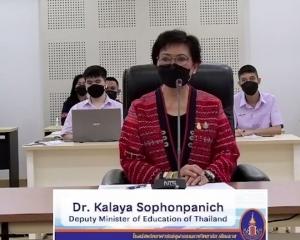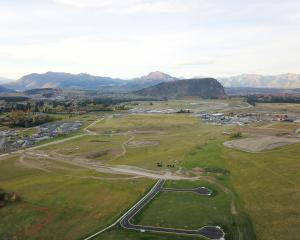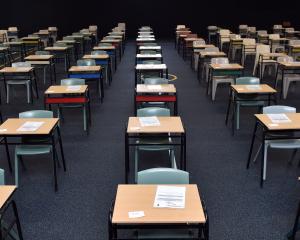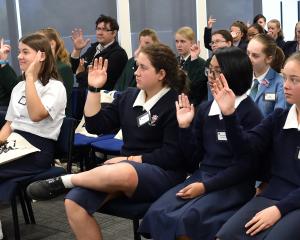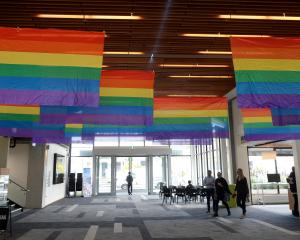The number of Otago secondary schools that fail to meet the national average pass rate in level 3 of the national certificate of educational achievement (NCEA) is continuing to grow.
The release of 2007 NCEA statistics by the New Zealand Qualifications Authority shows more than half (52%) of Otago's secondary schools did not meet the national average of 53.5% in NCEA level 3 last year.
In 2006, 41% of schools in the region failed to make the national average, in 2005 it was 44% and in 2004 the figure was just over 30%.
University of Otago educational assessment research unit co-director Prof Terry Crooks said many of the schools failing to reach the national average pass rate in level 3 were rural Otago schools.
Part of the reason for the increase was many pupils at these schools went into apprenticeships or trades, rather than academia, he said.
Rural pupils who did have aspirations to go on to university study seemed to be moving to larger schools in their area or boarding schools in cities.
‘‘Roxburgh Area School is a case in point. Their level 3 pupils who have aspirations for academia move to city schools or Dunstan High School.
‘‘The rural schools are losing the cream off their crop of top performing pupils to larger secondary schools.''
Kaikorai Valley College principal Philip Craigie said the number of schools not meeting the national average in level 3 was an anomaly that could continue.
He said many pupils who stayed on into NCEA level 3 at his school found employment mid-way through the year.
‘‘Yet they are still counted on the NCEA statistics, even though they don't sit any exams. It corrupts the data.''
The upside to the 2007 NCEA statistics is more Otago secondary schools are meeting or surpassing the national average pass rate in levels 1 and 2.
In 2005, 11% did not meet the national average pass rate in level 1. That figure dropped to 7% in 2006, and in 2007 only one school (3.7%) failed to make the grade.
In level 2, 26% of schools did not meet the national average pass rate in 2005. That figure dropped to 14.8% in 2006 and 11% in 2007.
Mr Craigie believed it was because schools, teachers and pupils were getting better at delivering NCEA programmes.
NZQA board chairwoman Sue Suckling said rates of achieving NCEA in each of years 11, 12 and 13 had generally improved over the past three years across decile bands, gender and ethnicity groups in New Zealand.
The 2007 NCEA statistics showed increases in achievement across all levels, with 62.3% of the year 11 roll achieving NCEA level 1 in 2007, 64.7% of the year 12 rol achieving NCEA level 2, and 53.5% of year 13 roll achieving NCEA level 3, she said.
A total of 76.8% of the year 11 roll achieved the literacy requirement in 2007 and 84.5% of the year 11 rol achieved the numeracy requirement.
NZQA deputy chief executive, qualifications, Bali Haque said the statistics provided useful information for schools and teachers in planning the year.
However, he cautioned against using the data to compare schools.
‘‘Factors such as decile, roll numbers and make-up courses offered, and course design are specific to each school and these influence a school's statistics,'' he said.

